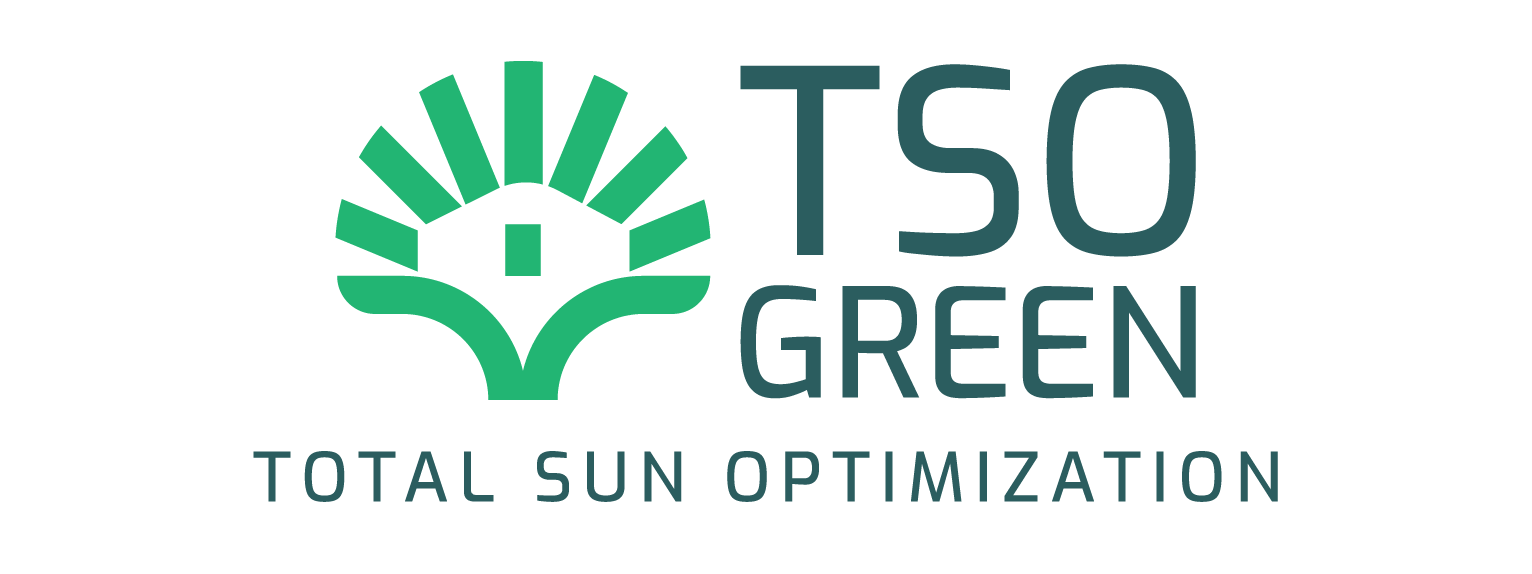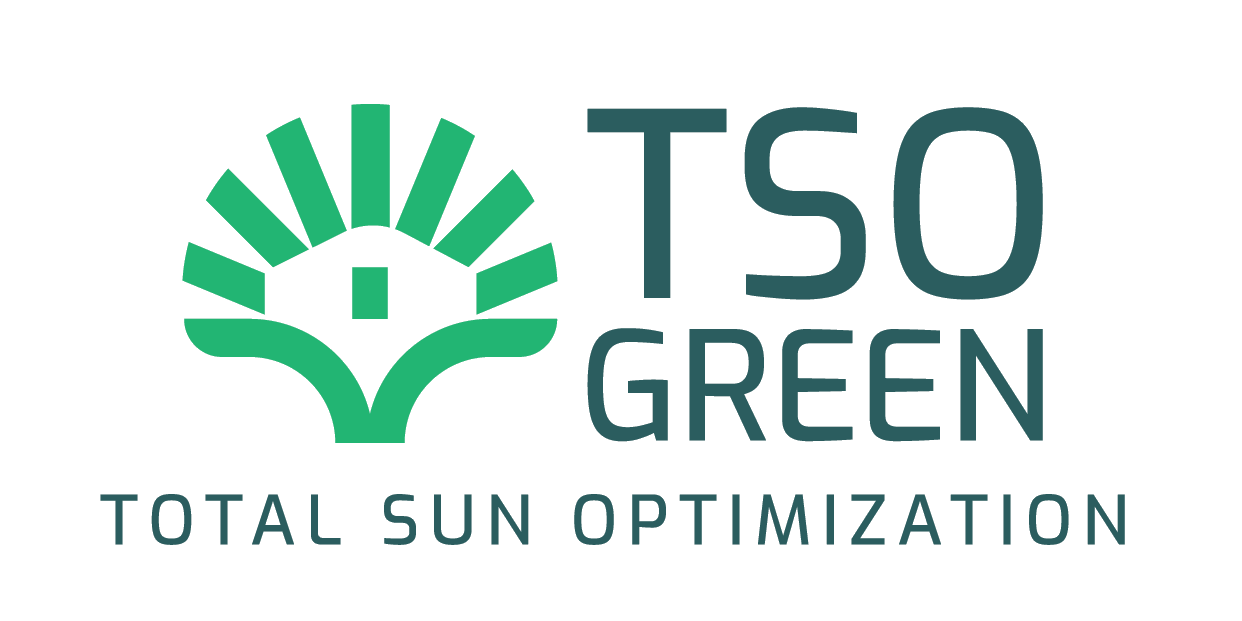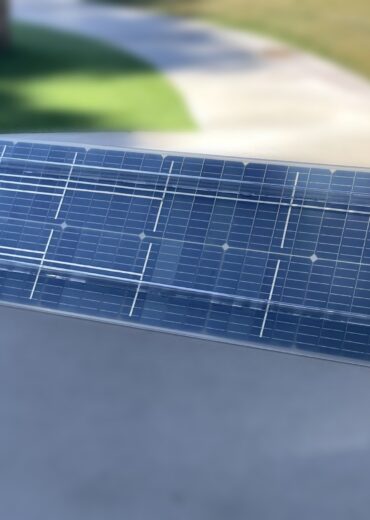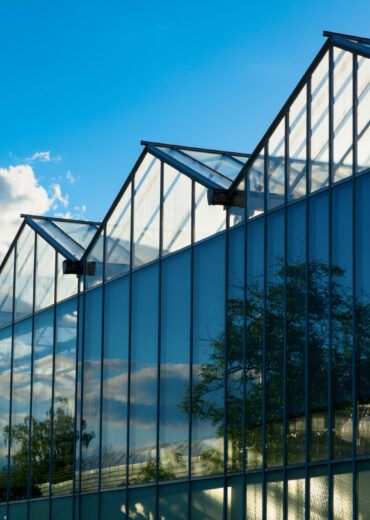LEARN MORE ABOUT TSO GREEN
Frequently Asked Questions
What are the specs of the Shading Blade?
- Lightweight and thin at 2.5-3mm
- The shading blade is tolerant to high density variable shading conditions
- Frame is clear for maximized sunlight control
- Rigid, designed for ¼” deflection across 2.5m spans
- Durable and sealed on all edges
What are the specs of the HiFi Sun Tracking Module?
- Water-resistant drive system enables precise 0-360-degree rotation of TSO Shading Blades
- Articulation at precise angles optimizes greenhouse floor lighting
- Requires minimal vertical space
- Lightweight (<3lbs/sqft), mounts under various greenhouses
- Anodized Aluminum-6061 alloy frame maximizes sunlight, offers strength, longevity
- Optimized dimensions for up to 12-meter spans
- Designed for optimal sunlight efficiency
- Chemical-resistant to standard cleaning compounds
- Fully assembled for quick installation with pulley system
- Easy servicing and concurrent cleaning with greenhouse routines
- Supports dark-sky initiative proximity to market
What warranties are included with the system?
Our Shading Blade and HiFi Tracking Modules come with a 10-year craftsmanship warranty and a 25-year performance warranty. Our proprietary Shade Management software also comes with full expert support.
What is the implementation time?
Implementation from shipment arrival to fully installed and operational can range from 2-4 weeks, depending on greenhouse size and complexity of facility.
How do solar panels benefit greenhouse farming?
Solar systems can significantly reduce the high energy costs for greenhouse operations by providing a renewable source of electricity. They can power lighting, heating, cooling, and irrigation systems.
Can the TSO product be integrated directly into greenhouse structures?
Yes, the TSO system is integrated directly into the frame of the greenhouse structure. It does this by suspending from the upper greenhouse frame using a pulley system. This classifies the frame, foundation, and several other structural aspects of the greenhouse structure as a "Solar Support Structure" and qualifies for significant solar tax credits.
How does solar energy impact crop yields in greenhouses?
Studies conducted at multiple agricultural institutions, including Cornell University's College of Agriculture and Life Sciences, have shown that partial shading towards precise light control will improve yields for certain crops by creating a more optimal microclimate. Specifically, reaching and not exceeding the plant's Daily Light Integral (DLI) was shown to increase produce weight by up to 40%. This can lead to increased overall crop yields, extended growing seasons, and improved product quality.
Can solar panels power an entire commercial greenhouse operation?
Yes, most commercial greenhouse operations can be powered entirely from TSO's installed system, depending on total energy requirements and geographic location. TSO's unparalleled energy density of roughly 156 watt/m2 and bifacial design ensures the highest energy output per greenhouse floor area.
What types of crops are best suited for solar-powered greenhouses?
The TSO System is ideal for nearly any crop type, given it's modular design and flexibility in precision control over shade vs. sunlight. Using our proprietary Shade Management software, operators can control various regions of the greenhouse differently based on crop type and need. Overall, shade-tolerant crops like lettuce, spinach, herbs, and some berries tend to perform well in greenhouses using solar and shade management technology. That said, with careful design, a wide variety of crops can be successfully grown, including tomatoes, peppers, cucumbers and more.
How much energy can a solar-powered greenhouse save?
Energy savings can be substantial, up to 100% of the greenhouse's energy requirements can be met with the TSO system. The exact savings depend on factors such as greenhouse size, location, and crop type. In many instances, greenhouses can generate enough power to become self-sustaining energy sources.
What is the payback period for solar panel installations in greenhouses?
Payback periods typically range from 5 to 10 years for traditional solar, but with TSO Green's affordability, simplicity and energy efficiency, payback can be as fast as 1-2 years, including solar tax credits. Our payback period depends on factors such as installation costs, energy prices, and available incentives in the region. Some systems may achieve payback in terms of months with optimal conditions and government subsidies and/or available tax credits.
Are there any government incentives for solar-powered greenhouses?
Many countries and regions offer incentives for solar installations in agriculture, including tax credits, grants, and feed-in tariffs. For example, in the United States, the Rural Energy for America Program (REAP) provides grants and loan guarantees for renewable energy systems in agricultural operations. There are also available tax credits in many regions that can contribute a significant amount of funding towards implementation.
How do solar panels affect the microclimate within a greenhouse?
Solar panels can help regulate greenhouse temperatures by providing shade during peak sunlight hours, reducing the need for cooling. They can also help retain heat at night, potentially decreasing heating costs.
What maintenance is required for solar panel systems in greenhouses?
The TSO System generally requires very minimal maintenance. Our HiFi STMs and control systems are ruggedized to endure 20+ years of the harsh greenhouse environment. When maintenance is required on installed HiFi STMs or control system electronics, the easy-access pulley system can be utilized for swapping Blades or Modules. Removal of dust and debris can occur at the same time as regular cleaning of the greenhouse's interior.
How do solar panels impact the structural design of greenhouses?
The TSO System can be designed into new construction, or retrofit on existing structures. The HiFi Sunlight Tracking Modules require little additional structural support due to their lightweight and modular design. The TSO engineering team will work with designers to consider factors such as greenhouse frame dimensions, greenhouse orientation, and additional dead loads when incorporating the TSO system into greenhouse designs.
WHY CHOOSE TSO GREEN
We are Building a More Sustainable Future
We believe in a sustainable future where renewable energy plays a vital role in optimizing the world’s harvest for years and decades to come.Are you with us?
Transforming Commercial Greenhouse Farming




